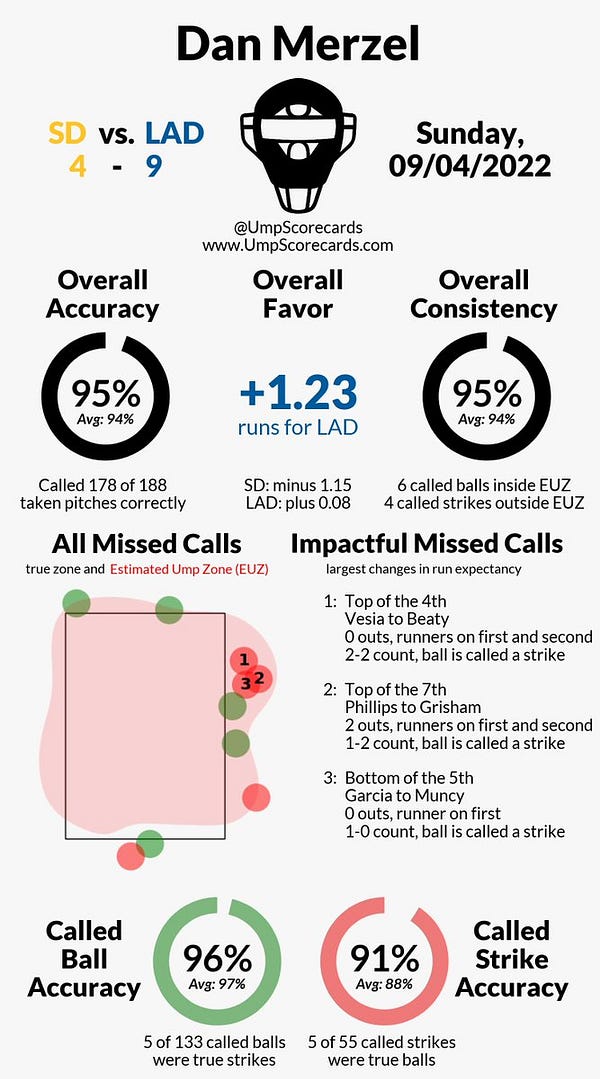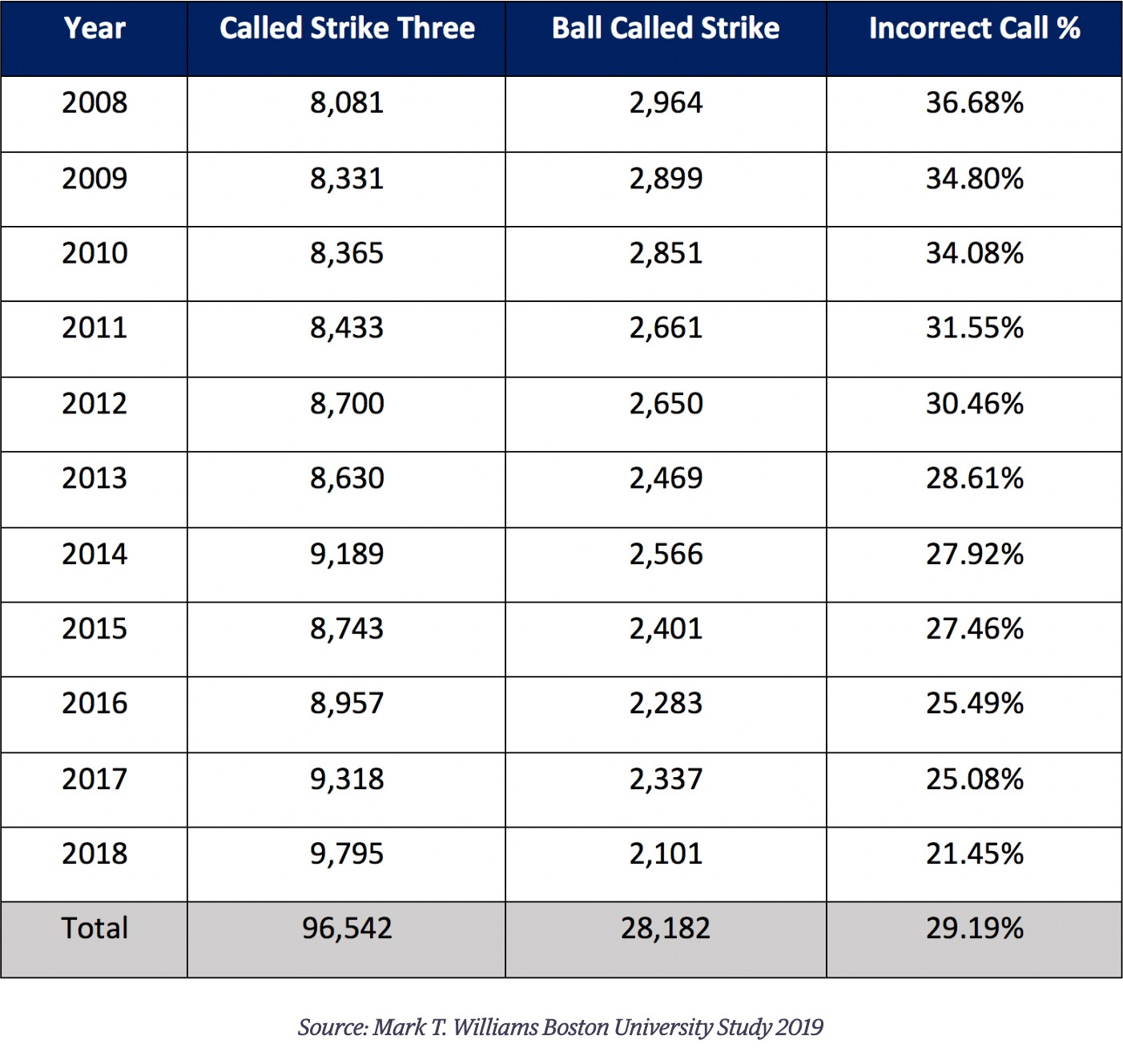The Umpire Problem Is Worse Than You Think
The solution is easy as 01010010 01001111 01000010 01001111
During the Padres’ critically important game against the Dodgers Sunday night, the home plate umpire made a game-changing 7th-inning “STRIKE THREE!”/3rd-out call against Padres outfielder Trent Grisham.
The umpire’s unchallengeable call provides additional proof—if any is still needed—that Major League Baseball’s rules must be changed to permit team managers the limited right during a game to promptly challenge home plate umpires’ erroneous 3rd-strike calls.
Here’s what happened.
With two outs in the 7th inning, and trailing the Dodgers by only one run (5-4), the Padres had runners at 1st and 2nd base when Grisham came to bat. The Padres had a golden opportunity to not only tie the game, but also to take the lead.
As Grisham dug in on a 2-strike count, the Dodgers’ pitcher threw a clearly-off-the-plate ball. The umpire, however, called that ball a 3rd-out strike three, prompting Grisham to physically express his disbelief in a manner that nearly provoked the errant umpire to eject him from the game:
Even the ESPN announcers briefly paused their breathless gushing about the Dodgers to express stunned criticism of the bad call. The third strike took the bat out of Grisham’s hands and sucked the momentum away from the Padres, who eventually lost the game.
In a post-game interview reported by The San Diego Union-Tribune, Padres manager Bob Melvin said, “We really felt like we had a really good chance to come back and win this game.” Melvin added, “Strike three to Grisham was a bad call.”
Umpire Scorecards confirmed what was suspected:


Such unchallengeable 3rd-strike/3rd-out calls by home plate umpires are unacceptably commonplace in the MLB.
In a study released in April 2019, Mark T. Williams, an eminent professor of finance at Boston University, and his team of graduate students used MLB’s own data to analyze almost four million pitches over the course of the previous 11 regular seasons (2008-2018) to determine how many balls were called strikes and vice versa.
Professor Williams’s research showed that, in the 2018 MLB season, home plate umpires made 9,795 “called strike three” calls, and, of those called strike threes, 2,101 were balls erroneously called as strikes. In other words, he found, 21.45 percent of all called strike-three pitches—about one in five—were actually balls erroneously called as strikes, and that was the best year in the sample.
The study also identified an enormous bias towards pitchers when there are two strikes: “For a batter with a two-strike count, umpires were twice as likely to call a true ball a strike (29 percent of the time) than when the count was lower (15 percent)”
Other studies have shown that on close calls umpires tend to make the call that favors shortening the game.
Public confidence in the integrity and fairness of MLB umpiring of balls and strikes is everything in this professional sport.
A rule change that would allow a manager during a game to promptly challenge a home plate umpire’s erroneous and potentially game-changing 3rd-strike/3rd-out call is a reasonable check-and-balance on the currently unbridled power of the umpire.
Yes, such limited challenges would result in some delay in the game. However, such delays would be short, given time-tested technologies that are now in place, such as the radar gun, instant replay, animated data-based pitch graphics, and strike-zone evaluation systems.
Analogous limited challenges to umpiring have been adopted in other professional sports, like tennis which uses Hawk-Eye replay technology following a challenge to quickly determine whether a player’s tennis ball is or is not out of bounds. The preeminent soccer leagues around the world have adopted highly accurate goal-line technology to prevent erroneous goal assessments.
Hope may be on the horizon, MLB is testing an automatic ball-strike (ABS) challenge system in the minor leagues.
The essential components of a fair umpire include consistency and absence of bias. Here’s the thing though, human beings are neither highly consistent nor unbiased. It’s not a matter of finding the right humans for the job; there are certain baked in inadequacies that all human umpires, even the most prodigiously talented, possess. Even the very best umpires have a limited ability to mitigate their human qualities. Undoubtedly Robo-umps will have flaws, but it is highly likely that upon their implementation the degree of bias and inconsistency in strike calls will decrease logarithmically from day one.
While this article has focused on strike 3 calls that were balls, umpires also err in reciprocal fashion with spectacular and devastating repercussions. And of course the Padres were the recipient of perhaps the worst example of all time:
For the self-flagellating Padres fan (is there any other kind?) here’s the full video:
We urge the MLB to adopt a rule change to allow a manager the limited right to promptly challenge a home plate umpire’s erroneous ball/strike call using ABS technology. This would help preserve baseball fans’ faith in and enthusiasm for America’s favorite pastime. Of course, fewer batters would angrily kick dirt on home plate umpires’ shoes following an incorrect 3rd-strike/3rd-out call, and the umpires would eject fewer irate managers. We think this is a small price to pay.






